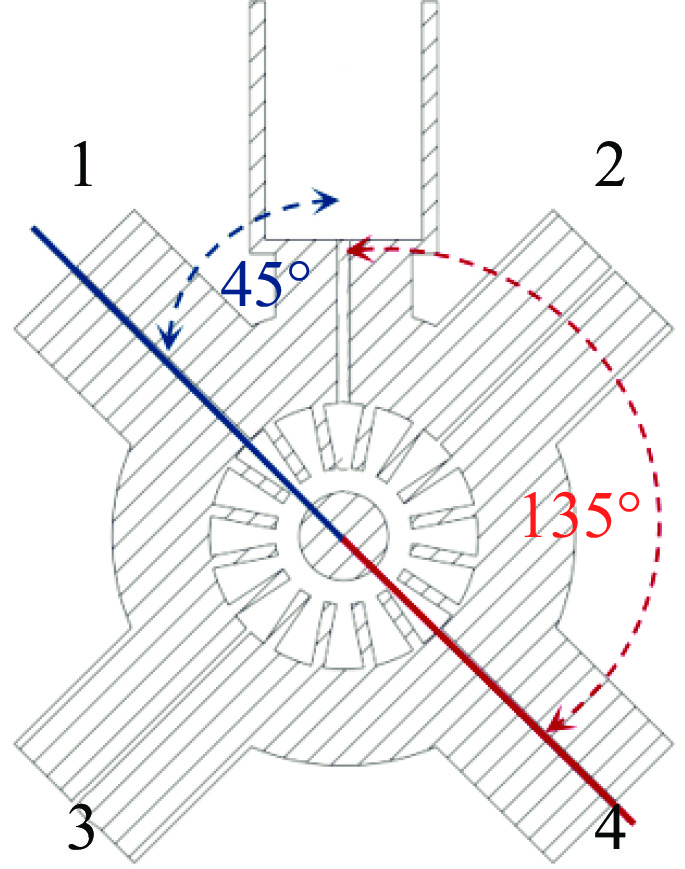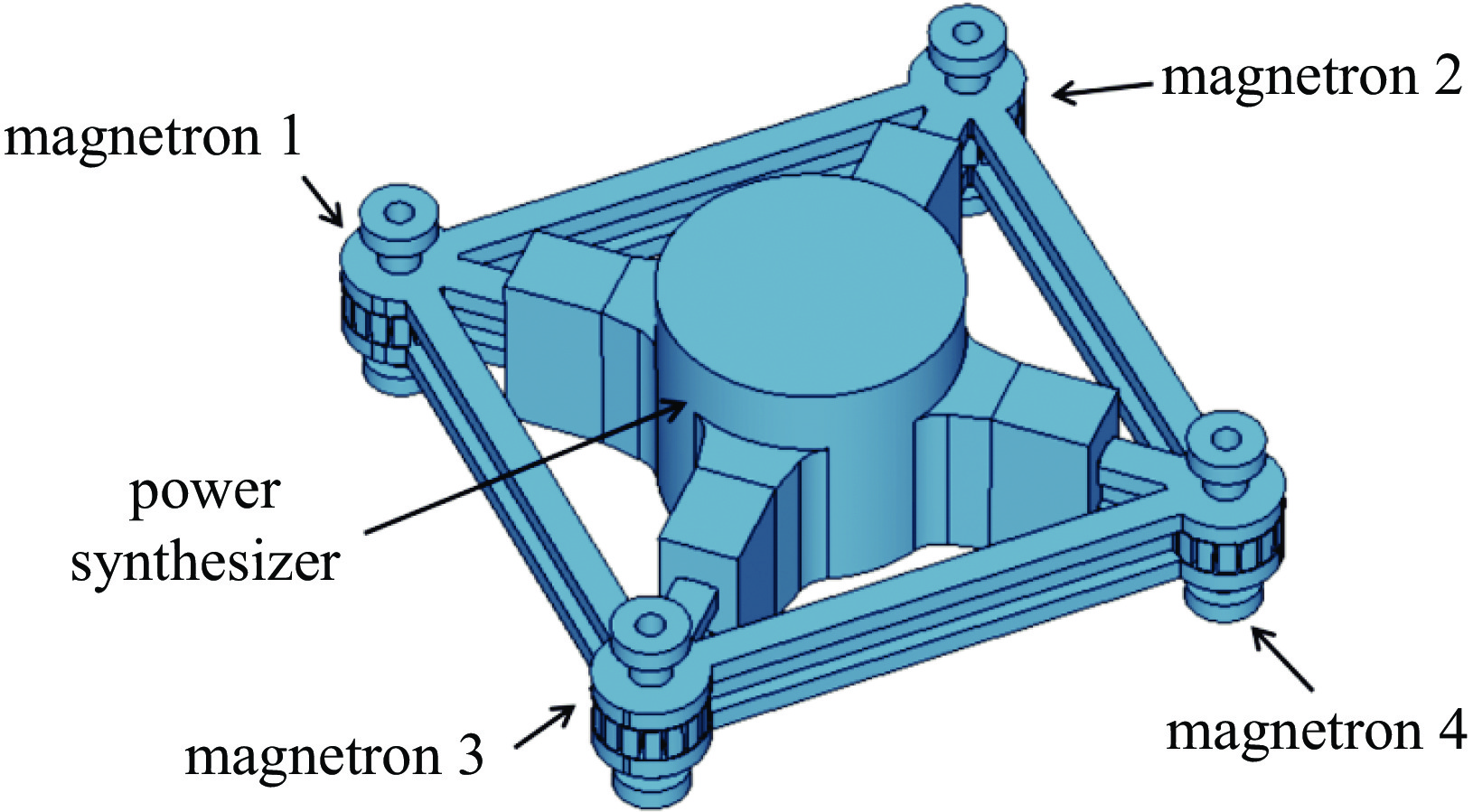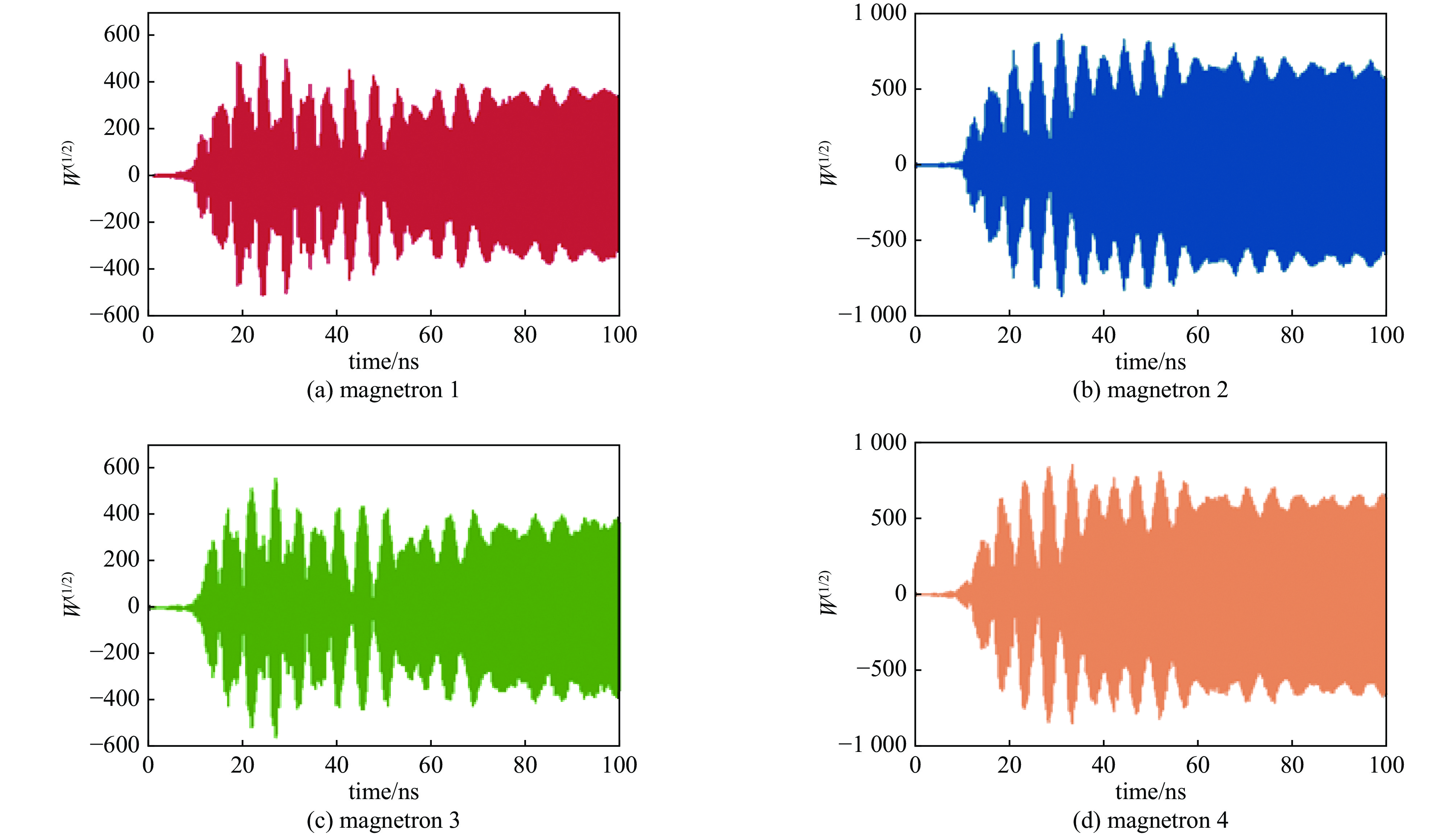Modular design and simulation validation of phase-locked magnetrons
-
摘要: 基于互耦锁相方案,设计了多磁控管单元模块,将其构造为轴向输出的模块化单元,以解决径向输出磁控管在大规模阵列应用中因为角向不均匀性带来的影响,并有效提高系统的鲁棒性。磁控管之间通过锁相桥连接,传统方案以单个磁控管模块为基础,设计方式单一且不灵活。此外,由于径向输出的磁控管角向电场分布不均匀,锁相桥在不同位置增加耦合结构会导致磁控管的特性阻抗变化,并改变锁相桥中能量占系统整体能量的比例,从而影响输出特性和锁相效率。首先设计了多种拓扑结构的磁控管锁相单元并进行了仿真研究,仿真结果表明,电场角向均匀性使得锁相桥开口位置及数量对于锁相性能有明显影响。随后,选取了适合模块化设计的首尾串联型模块进行下一步的研究,在此基础之上设计了四合一功率合成器,此时模块化单元为轴向输出设计。仿真结果表明,四管锁相单元模块的输出功率约为988 kW,约为自由振荡磁控管单管输出功率的四倍,锁相效率达到97%。Abstract: This paper presents a modular multi-magnetron unit design based on the mutual coupling phase-locking scheme, configuring it as an axially output module to address the issue of azimuthal non-uniformity in radial output magnetrons in large-scale array applications and significantly improve system robustness. The magnetrons are connected via phase-locking bridges, and the traditional designs based on single magnetron modules lack flexibility. Additionally, due to the non-uniform azimuthal electric field distribution of radial output magnetrons, adding coupling structures to the phase-locking bridge at different positions causes changes in the characteristic impedance of the magnetrons and alters the proportion of energy in the phase-locking bridge relative to the total system energy, thereby affecting output characteristics and phase-locking efficiency. Initially, various topological structures of magnetron phase-locking units were designed and simulated, showing that the opening position and number of the bridge significantly impact phase-locking performance due to the azimuthal field uniformity. Subsequently, an end-to-end series module, suitable for modular design, was selected for further study, and a four-in-one power combiner was designed based on this structure, making the unit output axially. After power synthesis, the output power of the four-tube phase-locking modular unit reached 988 kW, approximately four times that of a single free-running magnetron, with a phase-locking efficiency of 97%.
-
表 1 不同拓扑结构的多磁控管单元仿真结果
Table 1. Results of simulations

schematic
of modelsoutput power
total output poweranode current
total anode currentphase-locking
efficiency/%


79.7 


82.5 


95.9 


81.0 


96.8 -
[1] Vyas S K, Verma R K, Maurya S, et al. Review of magnetron developments[J]. Frequenz, 2016, 70(9/10): 455-462. [2] 电子管设计手册编辑委员会. 磁控管设计手册[M]. 北京: 国防工业出版社, 1979Electronic Tube Design Handbook Editorial Committee. Magnetron design handbook[M]. Beijing: National Defense Industry Press, 1979 [3] Benford J, Swegle J A, Schamiloglu E. High power microwaves[M]. 2nd ed. New York: CRC Press, 2007: 43-108. [4] Benford J. History and future of high power microwaves[J]. IEEE Transactions on Plasma Science, 2024, 52(4): 1137-1144. doi: 10.1109/TPS.2024.3391732 [5] Cruz E J, Hoff B W, Pengvanich P, et al. Experiments on peer-to-peer locking of magnetrons[J]. Applied Physics Letters, 2009, 95: 191503. doi: 10.1063/1.3262970 [6] Song Minsheng, Bi Liangjie, Meng Lin, et al. High-efficiency phase-locking of millimeter-wave magnetron for high-power array applications[J]. IEEE Electron Device Letters, 2021, 42(11): 1658-1661. doi: 10.1109/LED.2021.3112563 [7] Treado T A, Bolton R A, Hansen T A, et al. High-power, high efficiency, injection-locked, secondary-emission magnetron[J]. IEEE Transactions on Plasma Science, 1992, 20(3): 351-359. doi: 10.1109/27.142836 [8] Ju Jinchuan, Ge Xingjun, Zhang Wei, et al. Coherent combining of phase-steerable high power microwaves generated by two X-band triaxial klystron amplifiers with pulsed magnetic fields[J]. Physical Review Letters, 2023, 130: 085002. doi: 10.1103/PhysRevLett.130.085002 [9] Liu Jiayang, Zha Hao, Shi Jiaru, et al. First demonstration and performance of X-band high-power magnetron with parallel cathodes[J]. IEEE Transactions on Electron Devices, 2022, 69(7): 3960-3965. doi: 10.1109/TED.2022.3177390 [10] Qin Yu, Bi Liangjie, Yin Yong, et al. Simulation and experiment study of modular X-band phase-locking magnetron[J]. IEEE Transactions on Electron Devices, 2024, 71(7): 4342-4346. doi: 10.1109/TED.2024.3405399 -





 下载:
下载:







